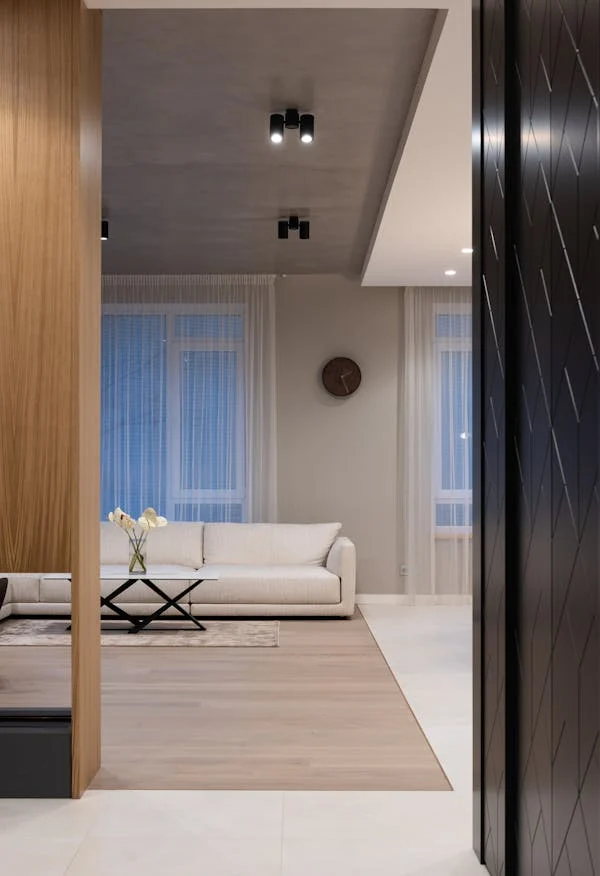When And How To Mix Flooring Materials

When we think of updating our floors, we almost always think of having a flooring or tile installer lay one type of material, like hardwood.
But what if you want to make a louder statement? Can you mix and match flooring materials?
The answer is yes, you can mix flooring materials. But there are a few rules to help you determine whether mixed flooring is right for your space!
Getting Started With Mix-N-Match Flooring

When should you introduce mixed materials to your space? Well there are a few variables you want to consider, such as:
- How Big Is Your Space: If your space is small, mixing materials is not advisable, as it will make it feel smaller. Hence, mix-and-match flooring is best for medium-large rooms.
- Aesthetics: If your room is large and bland, getting a flooring and tile installer to add different materials is a great way to add visual interest. Mixed flooring is also ideal for a creative person as it allows you to incorporate your personality into the room.
- Define A Space: Open-concept main floors remain popular with homeowners, but the downside is that each “room” within the cavernous space must be defined. The solution is to use different floors and transitions to create room separation.
How To Mix Flooring Materials

Here’s what homeowners need to know on how to get creative with mixed-material flooring!
- Plan Ahead: Never just “wing it” and mix materials without a plan. A flooring and tile installer should help you create a plan to prevent overdoing it. Your plan will also consider each space’s flooring needs.
- Use 2-3 Materials: Another symptom of overdoing mixed materials is using too many types of materials, including multiple patterns, designs, or colours in the same material. No one wants their floors to resemble a patchwork quilt, so limit your flooring material to 2-3 per space.
- Don’t Forget Transitions: Transitions are metal strips between flooring. We recommend using a transition between different flooring materials to prevent stubbed toes. They’re also helpful if there is a slight height difference between materials.
- Room Requirements: Before you begin mixing flooring material, consider how much natural light the room receives. If the room has a lot of sunlight, use a lighter colour scheme, as lighter floors do not fade the same way dark floors do.
- Colour Match: The final consideration before a flooring and tile installer begins work on your space is colour. When blending materials, there needs to be cohesion, so stick with a complimentary colour palette.
The Best Flooring Materials To Mix

Which flooring materials complement one another? Well, these are the best flooring material pairs.

We included “wood-look” and “stone-look” because many alternative floorings, such as luxury vinyl, laminate, or tile, can be made to look like wood or stone.
Also, when we say “hardwood” this could mean engineered hardwood; likewise, tile is either ceramic/porcelain or natural stone.
Guide To Mixed Flooring Design Elements

The purpose of mixed-material floors is to create visual interest. Visual interest doesn’t include stark contrasting materials, as this will make your space look like an “eye-sore.”
These are the “design principles” of mixed-material flooring that you need to consider before beginning:
- Colour: Not only do you want colours in the same family, but neutrals are visually pleasing and easier to work with.
- Texture: Adding texture to your floors adds another dimension to your space, which is why carpet contrasted with hardwood is so appealing.
- Size: A commonly forgotten element of mixing materials is the size of the materials. For instance, if you use oversized hardwood planks with tiny tiles, visually, it will look out of proportion, so it is best to use similar sizes.
- Pattern: If you are bold enough to use patterns while mixing flooring materials, keep it within reason. Too much pattern will overwhelm the space. So, if you want to use a pattern, plan out the look before you get flooring and tile installers to install it.
A Guide To Mixing Flooring By Room

Let’s bring this together with some suggestions on how to mix flooring materials per room.
- Kitchen: The key to mixing materials in kitchens is to keep it practical. The best materials for kitchens are easy to clean, tough, and durable, like tile. Although this approach may limit your material choices, you can create interest by playing with texture or adding “wood-look” tiles.
- Living Room: The most popular way to mix and match floors in your living room is to use hardwood throughout but soften the seating area with a large, plush carpet.
- Bathroom: Much like the kitchen, tile is the best option for your bathroom. Again, you can play with tile size, colour, design, or shape to make it visually appealing. Another thing you can do is play with area rugs, as they add texture and are more comfortable underfoot.
- Bedroom: It’s your bedroom, your sanctuary, so have fun with the design. Typically, homeowners prefer carpet or hardwood, so why not marry the materials?
Conclusion
Mixing flooring materials is an excellent way to create visual interest and can be a practical inclusion to your space, like adding carpet over tile. The trick to mixing materials is planning. Fortunately, if you have flooring and tile installers helping you with the installation, you can bring them into the planning stage to ensure you don’t over-blend materials.
If you plan to install more than one flooring material, we recommend using a flooring contractor. After all, flooring contractors specialize in floors, so they can help plan and correctly install every material!
Lastly, we know blending flooring materials can be a bit tricky, so if you have questions about planning, designing, or installing mix-and-match flooring, don’t hesitate to call us, the Brothers Flooring, for a free consultation! Let us help you get started on bringing your flooring dreams to life!



